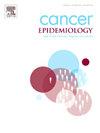Determinants of survival in women diagnosed with breast cancer between 2008 and 2017: An analysis of a cohort using data from four Population-Based Cancer Registries of Colombia
IF 2.4
3区 医学
Q3 ONCOLOGY
引用次数: 0
Abstract
Background
Breast Cancer (BC) is the leading cause of cancer-related mortality in women, especially in low- and middle-income countries. Population-Based Cancer Registries (PBCRs) play a crucial role in monitoring cancer trends and guiding evaluation and planning of cancer control programs. In Colombia, there are no national analyses of BC survival. The aim was to estimate the overall survival up to 5-year of women diagnosed with BC, as well as its determinants, in Colombia using population-based data from four Colombian PBCRs.
Methods
We conducted a cohort study with women diagnosed with invasive BC between 2008 and 2017, identified by the corresponding PBCRs as residents of the Colombian cities of Barranquilla, Bucaramanga metropolitan area, Manizales, and Pasto. We performed follow-up up to 5 years after the BC diagnosis, or until death (all-cause). We estimated the overall survival (Kaplan Meier). We evaluated the simultaneous effect of multiple risk factors on death risk using Cox proportional hazards analysis, obtaining adjusted Hazard Ratios (aHR) and Confidence Intervals (CI).
Results
The analysis cohort included 8020 BC cases. The observed overall survival was 72.5 %. The likelihood of 5-year survival was lowest for women aged 70 or older (aHR 1.61; 95 % CI 1.42–1.83), those living in a middle Socioeconomic Stratum (SES) (aHR 1.32; 95 % CI 1.05–1.66), those affiliated to the subsidized Health Insurance Regime (HIR) (aHR 1.47; 95 % CI 1.32–1.63), and those diagnosed in stages III-IV (aHR 2.29; 95 % CI 2.03–2.57) compared to women with a diagnosis age between 50 and 70 years, residents in high SES, those affiliated to the contributory HIR, and those diagnosed at stages I-II, respectively.
Conclusion
Social disparities are linked to BC survival in Colombia, likely due to limited access to healthcare services. This suggests the importance of strengthening screening and diagnostic care, especially for vulnerable populations.
2008年至2017年期间诊断为乳腺癌的妇女的生存决定因素:使用哥伦比亚四个基于人群的癌症登记处的数据对队列进行分析
乳腺癌(BC)是女性癌症相关死亡的主要原因,特别是在低收入和中等收入国家。基于人群的癌症登记(pbcr)在监测癌症趋势和指导癌症控制项目的评估和规划方面发挥着至关重要的作用。在哥伦比亚,没有BC存活的全国性分析。目的是利用哥伦比亚四个pbcr的基于人群的数据,估计哥伦比亚诊断为BC的妇女的5年总生存率及其决定因素。方法:我们对2008年至2017年间诊断为浸润性BC的女性进行了一项队列研究,这些女性由相应的pbcr鉴定为哥伦比亚城市巴兰基亚、布卡拉曼加大都市区、马尼萨莱斯和帕斯托的居民。我们在诊断出BC后进行了长达5年的随访,或直到死亡(全因)。我们估计了总生存率(Kaplan Meier)。我们使用Cox比例风险分析评估多个危险因素对死亡风险的同时影响,获得调整后的风险比(aHR)和置信区间(CI)。结果分析队列包括8020例BC病例。观察到总生存率为72.5 %。70岁及以上女性的5年生存率最低(aHR 1.61;95 % CI 1.42-1.83),生活在社会经济中层(SES)的人(aHR 1.32;95 % CI 1.05-1.66),那些隶属于补贴医疗保险制度(HIR)的人(aHR 1.47;95 % CI 1.32-1.63),诊断为III-IV期的患者(aHR 2.29;95 % CI 2.03-2.57),与诊断年龄在50 - 70岁之间的妇女、高SES的居民、参与贡献HIR的居民和诊断为I-II期的妇女相比。结论:在哥伦比亚,社会差异与不列颠哥伦比亚省的生存有关,可能是由于获得医疗服务的机会有限。这表明加强筛查和诊断护理的重要性,特别是对弱势群体。
本文章由计算机程序翻译,如有差异,请以英文原文为准。
求助全文
约1分钟内获得全文
求助全文
来源期刊

Cancer Epidemiology
医学-肿瘤学
CiteScore
4.50
自引率
3.80%
发文量
200
审稿时长
39 days
期刊介绍:
Cancer Epidemiology is dedicated to increasing understanding about cancer causes, prevention and control. The scope of the journal embraces all aspects of cancer epidemiology including:
• Descriptive epidemiology
• Studies of risk factors for disease initiation, development and prognosis
• Screening and early detection
• Prevention and control
• Methodological issues
The journal publishes original research articles (full length and short reports), systematic reviews and meta-analyses, editorials, commentaries and letters to the editor commenting on previously published research.
 求助内容:
求助内容: 应助结果提醒方式:
应助结果提醒方式:


